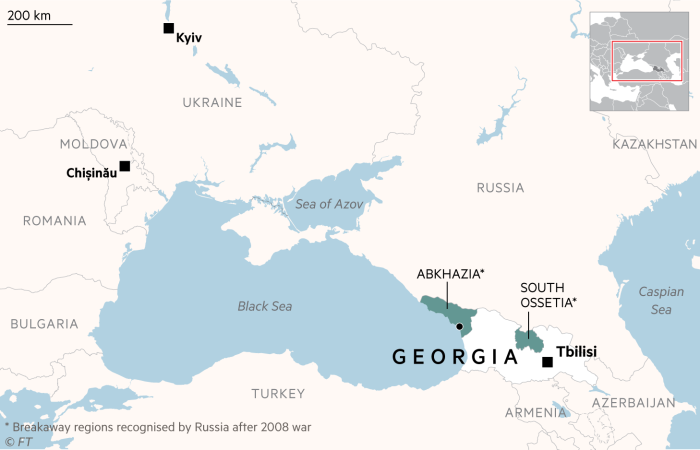In 1998, the then science minister, Lord David Sainsbury, appointed Lara Croft, tomb raider, as an ambassador of British scientific excellence. “I use her as an example of one of the great success stories in this country,” he said. It is difficult to imagine this happening today, not only because it is very strange, but because there is nothing especially British about Lara Croft in the 21st century.
Tomb Raider was released in 1996 by Core Design, a video games developer based in Derby. In response to the ambassadorial appointment, Core chief executive Jeremy Heath-Smith said Croft — a female Indiana Jones, who, in manner, resembled Harrison Ford less than Kirstie Allsopp — was a personage of British culture equal to James Bond. “Providing we, as a company, don’t decimate her character, there is no reason why she shouldn’t go on for a long time,” he said.
Core never did abuse Croft’s character, but it did do worse: it mismanaged the financial asset. The sixth game in the series, released in 2003, was a high-profile flop that failed to bring the franchise to a new generation and squandered the momentum of the Angelina Jolie-starring film adaptations. Core’s British parent company, Eidos, reassigned the development of the series to an American studio, itself later acquired by a Japanese multinational that sold it on to a Swedish holding company, with financing from Saudi Arabia’s Public Investment Fund.
This fact alone should not disqualify Croft as culturally British. It might as well be true for half of the Premier League. Rather, as Croft metamorphosed from a British property to a global one — a new film and TV series are under way — the qualities that once coded her as British have fallen out of fashion. A landed aristocrat educated at the same school as the current king of England, who shoots exotic game and ransacks foreign tombs for sport, might sell issues of Tatler but not, perhaps, game consoles to Gen Z.
Tomb Raider was a successful video game, but Croft was, at one time, a pop icon. Her arrival in the mid-1990s occasioned “a seismic change in video gaming,” says Core’s Heath-Smith. “She sold a shitload of PlayStations all around the globe. Lara was not this hulking big man with a gun blasting people’s heads . . . she took video gaming out of a dark bedroom with spotty kids eating pizzas into the mainstream. I remember going to dinner parties and people were talking about video games. That was unheard of.”
Arriving only a few months after the first Spice Girls single, Croft rode the wave of Cool Britannia. Alongside Britpop, Kate Moss and Damien Hirst, she represented the digital front of British cultural power. She landed the cover of The Face and partnerships with U2, Gordonstoun school, Lucozade and Dave Stewart of the Eurythmics. In other words, Croft was perfect for the moment. There was just the problem of her having become famous for raiding tombs.
In the original video game, Croft is an archaeologist in the mode of the wealthy Victorians sent to Egypt to convalesce, who took home mummies as souvenirs. Acquisitive and unbothered with ethics or custom, she was a product of the colonial imagination, as was her world: the lands beyond the empire, abundant with plunder and peril. At her Surrey manor, Croft was attended by a shambling butler who players could lock inside a freezer, which didn’t not feel like something Croft would do.
“She was always envisioned as an anti-hero rather than straight-up action heroine, guided by an amoral self interest and doing the right things for the wrong reasons,” says Paul Douglas, lead programmer on the original Tomb Raider. The nature of the character followed from the evolution of the game design, which, over its development, changed focus from realistic exploration to the exaggerated athleticism of death-defying leaps and flips over spike traps and rolling boulders, or running circles around a T-Rex with a pistol in each hand.
“Croft has undoubtedly drawn people to archaeology,” says Margaret Maitland, an Egyptologist at the National Museum of Scotland. “But Indiana Jones-style narratives have also distorted public perceptions of the past by celebrating ‘treasure’ . . . promoted conspiracy theories over an appreciation of real ancient people and objects . . . [and normalised] problematic collecting practices, which is far from harmless.” For some, Croft belongs in a museum — and that’s exactly where she is. Maitland’s museum is currently curating an exhibition of video games, in which the original Tomb Raider is on display, sealed behind glass.
In 2013, Crystal Dynamics, the California game studio given custody of Croft after Core Design, embarked upon a comprehensive modernisation of the character. Dynamics, under the auspices of its then-owner Square Enix, reimagined Croft as more of a real person, less superyacht owner than Below Deck cast member. The new Croft was a young, earnest and saturnine striver who raided tombs more by accident than vice. Down with cartoon sexuality, up with the inherent profanity of grave robbing.
Five minutes after the game began, she was impaled on a steel rod, and the camera lingered on her pain. “It gave her a little bit more of this grounded, more relatable sense,” said Dynamics’ Dallas Dickinson in 2021. “The superhero version may not have been as accessible to certain people and so when she became more real . . . I think she resonated with an entirely new generation of gamers.”
Becoming real and resonant meant minimising the importance of Croft’s wealth. It is neither relatable nor aspirational to have been born into a family gifted its lands by the child king Edward VI in 1547, as Tomb Raider lore has it. It is certainly not relatable to be born into that wealth and be shameless about it, as Croft was. Worse, it can be dramatically inert. “She very much wants to stand on her own two feet,” said writer Rhianna Pratchett, who worked on the 2013 video game. “She wants to make her own way in the world on her own terms. She puts herself through university. She works several jobs in order to do so.”
The 2018 Tomb Raider film with Alicia Vikander is based on this version of the character and introduces Croft as a scrappy bike messenger who cannot pay her bills. “A girl of the people and not the upper-class,” says Roar Uthaug, the film’s director. “What often makes characters interesting is their struggles, and overcoming hurdles. If you have all the money in the world, you can solve a lot of problems.”
The most recent Tomb Raider, from a Montreal studio, has Croft reckon at last with archaeological ethics. “The reboot has been about bringing a more grounded version of Lara,” said the game’s narrative director Jason Dozois in 2018, “and what that means for us is becoming more responsible with the use of archaeology. It’s not just about possessing an object, going into a tomb, everything crumbles, and then leaving. It’s about learning that archaeology is also culture, history and language, and that involves people.”
The lesson is a good one, but it was never this new version of the character who needed to learn it. And it is a dead end. After all, the game is called Tomb Raider. The ceiling on Croft’s modernity is to become a sustainable, inclusive graverobber. Uthaug’s movie deferred the issue by putting Croft on a mission to find her father, not expatriate a relic to the British Museum. But when the father has been found and Croft’s origin story has been told, what does a Tomb Raider do next? “I’m sure if we had continued making sequels,” Uthaug says, “that would have had to have been a discussion.”
Lara Croft, colonialist? You must not like to have fun at the movies!” Lloyd Levin says to me. Levin is wrong on the facts (I like to have fun; we all do), but not in spirit. Levin was a producer of the 2001 Tomb Raider film with Jolie, whose director, Simon West, envisioned Croft as an aristocrat in the sense that Batman was an aristocrat. This Croft put her family largesse towards a high-tech operations centre run by a support staff, used not to enrich herself but to save the world from sinister forces who would misuse the supernatural powers of ancient artefacts. “The first thing I wanted to do was make sure Lara’s not taken at face value as a rich, spoiled person,” West said in 2018. The director forbade Jolie from taking lessons in British etiquette; Croft would stick her feet up on the table.
Tasha Huo, the lead writer of a Tomb Raider animated series on Netflix, The Legend of Lara Croft, out this month, ends up in a similar place by attempting to reconcile the new Croft with the old one, which is like having to explain how Daniel Craig’s Bond would turn into Roger Moore’s. “I was missing the old Lara Croft, who was extremely confident, who just knew herself inside and out,” says Huo. “As a little girl growing up, you don’t see a lot of women who are working on their own, who are very independent and extremely happy in that independence. Nothing out there in the world can scare them or can intimidate them.”
In every iteration, Croft is a strong, confident character. But, like her wealth, the modern Croft has to earn this with blood and tears. Of Huo’s calibrations, the most impactful is occasionally allowing Croft to have a good time. Tonally, the series is less in line with the video game reboot written by Rhianna Pratchett than Pratchett’s work on the character outside the game, in comic books.
One of Pratchett’s comic issues puts Croft in Elizabeth Bennet cosplay, fighting on the Tube. Croft was never a particularly funny character, but Huo and Pratchett recognise that she is fundamentally absurd. Huo’s series is concerned with balance — Croft, as a person, learning to let in both light and dark — and it feels like a prescription for the future of the character. She is, inescapably and at once, hopelessly imperial and deeply silly. If she is fun, it is because she can afford to be.
“I could get more fun things done in the comics,” Pratchett said in 2023; the comics, she has said, never faced the same scrutiny as the games, always the financial and creative engine of the whole enterprise. It’s the games that sell a shitload of consoles. Outside of that burden, there is more fun to be had.
Nobody is talking much about what comes next. There is a new game by Crystal Dynamics, under new ownership. There is an Amazon TV series, to be developed by Phoebe Waller-Bridge, and another film, all of which are presumed to reboot the character again. Who is Croft, their writers and development executives will be asking. But this is not such a difficult question to answer. If you can imagine Rose Hanbury shooting a Tyrannosaurus in the face, you understand completely.
Follow @FTMag to find out about our latest stories first and subscribe to our podcast Life and Art wherever you listen

















































































































































You must be logged in to post a comment Login